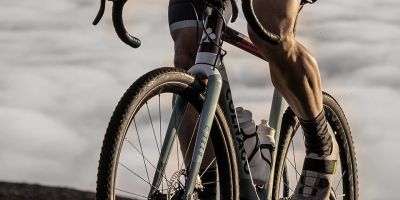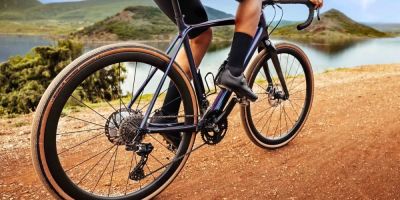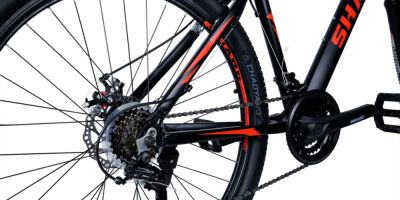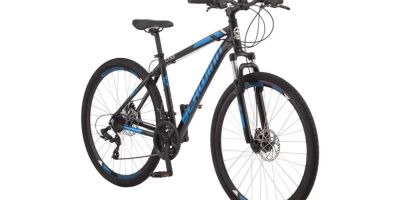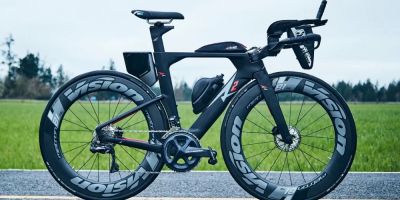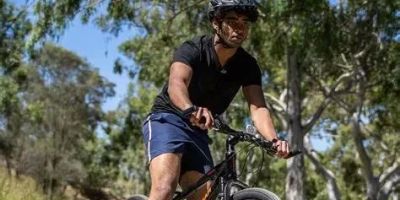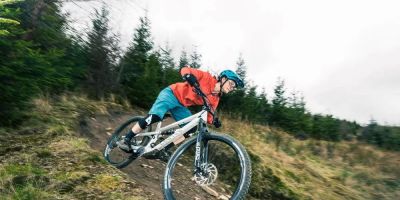Why Choose a Bikepacking Bike with Drop Handlebars?
As a passionate bikepacker, I’ve explored many terrains—mountain trails, forest paths, and endless stretches of flat, open roads. One thing I’ve come to appreciate over the years is the importance of selecting the right bike for the journey. After trying various bike setups, I found that a bikepacking bike with drop handlebars strikes the perfect balance of comfort, speed, and control, especially on long-distance rides. If you’re considering bikepacking with drop handlebars, you're in the right place! I’ll walk you through why drop handlebars are an excellent choice and how they can transform your bikepacking experience.
The Comfort and Performance of Drop Handlebars
Drop handlebars are often associated with road bikes, but they can be a fantastic choice for bikepacking as well. One of the primary benefits of drop handlebars is the multiple hand positions they offer. Unlike flat handlebars, which only allow one grip style, drop handlebars let you switch between several positions. This is particularly useful during long bikepacking trips, where comfort and fatigue management are key to maintaining endurance.
Here’s why I swear by drop handlebars for bikepacking:
- Variety of Hand Positions: Whether you prefer to rest your hands on the top, hoods, or drops, the variety of positions helps reduce strain on your hands, wrists, and shoulders—areas that can easily become sore during long rides.
- Better Aerodynamics: The drop position allows you to lower your torso, improving aerodynamics and reducing wind resistance, especially on long, flat stretches of road.
- Improved Stability and Control: The wider stance of drop handlebars helps to improve bike handling, providing more control over rough terrain and while navigating tricky descents.
With drop handlebars, you get the performance benefits of a road bike but with the comfort needed for the unpredictable nature of bikepacking. But of course, as with any bike setup, it’s important to ensure that the rest of your bike and gear complement your riding style and needs.
1. Selecting the Right Bike for Bikepacking with Drop Handlebars
Not all drop-bar bikes are created equal, especially when it comes to bikepacking. In my experience, bikepacking bikes need to be equipped to handle rougher trails, heavy loads, and long distances. Here are the key features I look for when selecting a bikepacking bike with drop handlebars:
Frame and Material
When it comes to bikepacking, durability is key. Steel is often my go-to material because it offers a great balance of strength, comfort, and shock absorption. Steel frames can handle heavy loads and are much more forgiving over rough terrain than aluminum or carbon. That said, some modern bikes with aluminum or carbon frames are also designed with bikepacking in mind and can offer excellent performance if you prioritize speed and lightweight options.
Geometry
Bikepacking bikes are designed to be more stable than road bikes, with a more relaxed geometry. A longer wheelbase, slacker head angle, and a lower bottom bracket help increase stability, especially when carrying weight. For drop-bar bikes, I recommend looking for bikes with an endurance or gravel-specific geometry, which is designed to be comfortable over long distances and rough terrain.
Tire Clearance
Wide tires are essential for bikepacking, particularly if you plan to ride on mixed surfaces. Look for bikes that offer plenty of tire clearance, as wide tires will provide more traction, comfort, and stability over gravel, dirt, and rocky paths. Generally, you’ll want tires that range from 35mm to 45mm for gravel roads, but for rougher terrains, wider tires may be necessary.
Mounting Options for Gear
Bikepacking involves carrying gear, so ensure that your bike has enough mounts for racks, bags, and other accessories. Many bikepacking bikes come with mounts for front and rear racks, water bottle cages, and fenders. If you plan on carrying heavier loads or riding for multiple days, a bike with these features will make your trip much easier.
2. Best Drop-Handlebar Bikepacking Gear
Once you’ve selected the perfect bike for your bikepacking adventure, the next step is choosing the right gear. Having the right equipment can make or break your experience, and it’s essential to find the right combination of lightweight and durable gear. Here are my top recommendations for bikepacking gear when riding with drop handlebars:
Handlebar Bags
One of the best ways to carry your essentials on a bikepacking bike is with a handlebar bag. These bags provide easy access to snacks, maps, or your camera without disturbing the balance of your bike. A good handlebar bag can carry up to 10-15 liters of gear and is mounted directly on the handlebars, which keeps the weight balanced and easily accessible while riding.
Frame Bags
For additional storage, a frame bag is a must-have. These bags fit within the triangle of your bike frame and offer great storage capacity while keeping your weight low and centered. I find these bags incredibly helpful for carrying heavier items such as a water bladder, tools, or extra clothes.
Panniers and Rear Bags
If you're embarking on a longer bikepacking trip, rear panniers are perfect for carrying heavier gear. These bags sit on the rear rack and distribute weight evenly, helping to keep your bike stable. Rear bags like saddle packs are also excellent for reducing bulk and making it easier to navigate through tight spaces or rough terrain.
Water Bottle Holders
Hydration is key on any bikepacking trip, so make sure you have plenty of water bottle holders. You’ll need a minimum of two or three on a long ride, and some bikes even offer additional mounting points on the fork or rear triangle for extra water bottle cages. I prefer larger capacity bottles or a hydration system to keep the weight evenly distributed and easily accessible.
3. Tips for Comfortable Long-Distance Riding with Drop Handlebars
Long-distance bikepacking can be tough, but with the right techniques and mindset, it can also be one of the most rewarding experiences. Here are a few tips I’ve learned over the years to ensure comfort and efficiency while riding with drop handlebars:
Adjust Your Handlebars Properly
The positioning of your drop handlebars can have a huge impact on your comfort. A lower handlebar position may help with aerodynamics, but if it’s too low, it can cause unnecessary strain on your back and wrists. A slight upward tilt can provide more comfort, especially for long rides. Ensure that your handlebars are set to a height that allows you to ride with your back relatively straight and your elbows slightly bent.
Practice Shifting Positions
As mentioned earlier, drop handlebars offer several hand positions. While riding, be sure to shift between the top, hoods, and drops regularly to prevent strain and fatigue. Changing your hand position can reduce pressure on your wrists and hands, which can become sore after hours of riding.
Keep a Steady Pace
One of the biggest mistakes I see riders make is starting off too fast, only to burn out later in the ride. On long bikepacking trips, pacing is essential. Keep a steady rhythm that allows you to ride efficiently and conserve energy. It’s better to ride a bit slower at first and gradually increase your pace rather than overexerting yourself in the beginning.
Take Breaks and Stay Hydrated
Don’t forget to take breaks along the way. Regular rest stops not only give you a chance to stretch your legs but also allow you to refuel and hydrate. I recommend taking a short break every 1-2 hours, especially during long days on the bike.
4. Popular Routes for Bikepacking with Drop Handlebars
If you’re ready to embark on a bikepacking adventure, there are countless scenic routes across the United States that are perfect for drop-handlebar bikes. Here are a few of my favorites:
- The Great Divide Mountain Bike Route (GDMBR): This is one of the most iconic bikepacking routes, running from Canada to Mexico along the Rocky Mountains. It’s ideal for drop-handlebar bikes due to its mix of gravel, dirt, and remote roads.
- The TransAmerica Bicycle Trail: This route takes you from Oregon to Virginia, passing through diverse landscapes. It’s perfect for long-distance bikepacking with drop handlebars, as it offers a mix of paved and unpaved roads.
- Pacific Coast Route: If you’re looking for beautiful coastal views, this route runs from Washington to California and is a favorite among bikepackers. The route features well-maintained roads and scenic landscapes.
Whether you’re new to bikepacking or an experienced rider, these routes will offer a memorable and challenging experience for you and your drop-handlebar bike.

